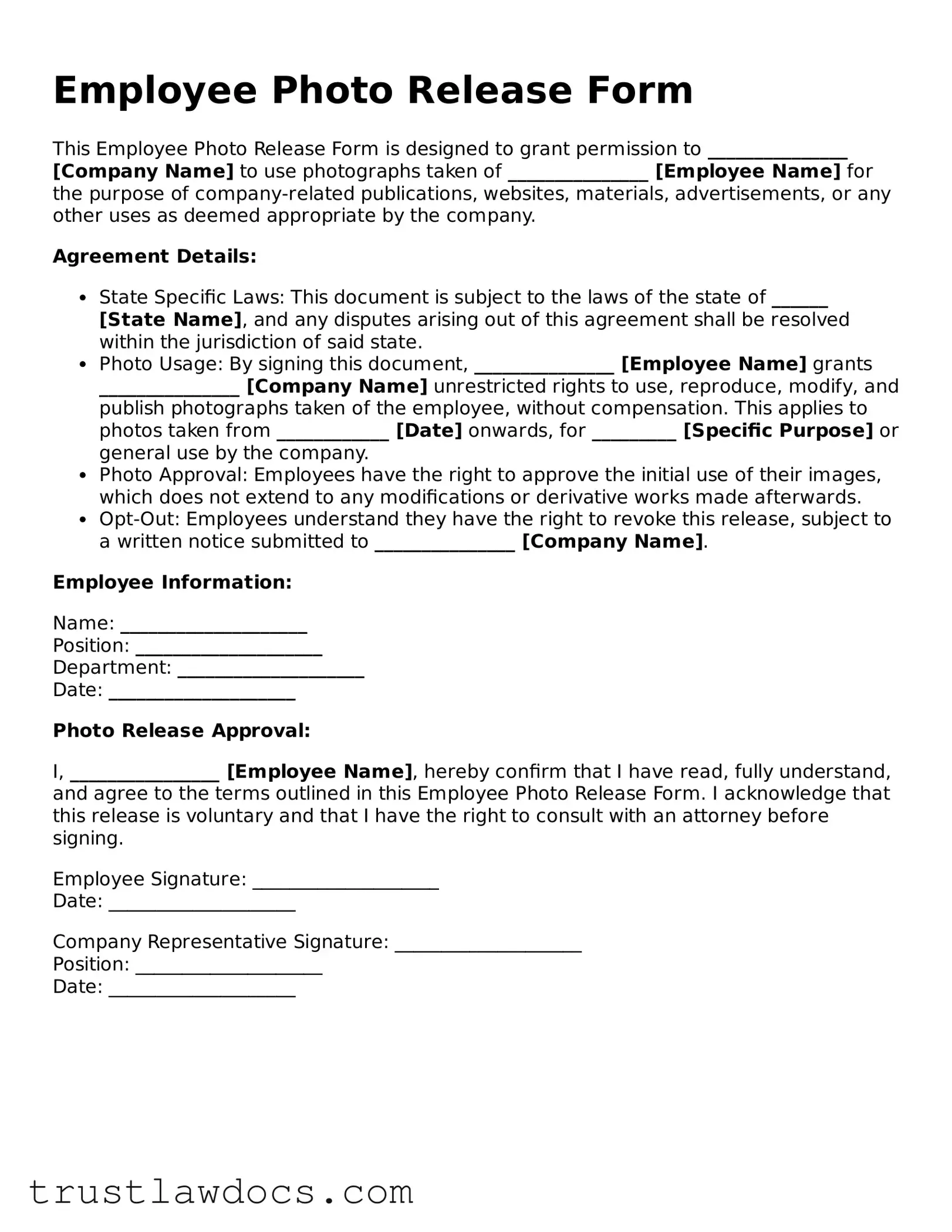One similar document to the Employee Photo Release Form is the Model Release Form. This document is used in photography and videography to grant permission to the photographer or videographer to use the model's image for commercial or promotional purposes. Like the Employee Photo Release Form, it ensures that the person whose image is being captured consents to the use of their likeness, thereby preventing potential legal disputes related to privacy and image rights.
The Talent Release Form mirrors the Employee Photo Release Form in its function within the entertainment industry. It allows producers and filmmakers to use the talent's (actors, musicians, etc.) image, voice, and performance in their projects. Similarly, it protects the producers by obtaining consent for the distribution and commercial use of the content, highlighting the importance of clear agreements on content usage.
Another analogous document is the Video Release Form. This form is essential when capturing video footage of individuals, ensuring that those filmed agree to have their images and actions recorded and distributed. Both the Video Release Form and the Employee Photo Release Form seek permission to utilize an individual's likeness in various media formats, thus safeguarding copyright and defamation risks.
The Copyright Transfer Agreement shares similarities with the Employee Photo Release Form as it involves the transfer of rights from the creator (or holder of the copyright) to another party. This document is critical in scenarios where intellectual property rights, such as photos or other creative works, are transferred to ensure that the recipient has the legal right to use, publish, or replicate the content.
Similar to the Employee Photo Release Form is the Patient Consent Form used in healthcare. This form secures permission from patients to allow healthcare professionals to perform procedures or treatments. It's akin to obtaining consent under different circumstances, emphasizing the protection of privacy and acknowledging the individual's autonomy over their body or likeness.
The Property Release Form is used to obtain permission from property owners to photograph or film their property. Like the Employee Photo Release Form, it's crucial for ensuring that content creators have the legal rights to use images or footage of private properties, thereby avoiding legal issues related to property rights and privacy.
In academic and research settings, the Research Consent Form is used to gain participants' agreement to be part of a study, including being photographed or filmed. This document parallels the Employee Photo Release Form by securing consent to avoid breaching privacy or ethical standards, ensuring participants are informed about how their image or data will be used.
The Volunteer Release Form is utilized by organizations to gain consent from volunteers for various activities, including being photographed or filmed during volunteer events. It is similar to the Employee Photo Release Form as it preemptively handles consent for using volunteers' images, protecting organizations against potential privacy or image rights violations.
Media Consent Forms are used in educational settings to get permission from students or guardians for the student's image to be captured and used in school-related publications and media. Like the Employee Photo Release Form, it seeks to clear any potential legal hurdles by obtaining consent for the use of the individual's likeness in a specific context.
Lastly, the Participant Release Form, often used in events and competitions, requires participants to allow their image, voice, or performance to be recorded and publicly shared. It closely resembles the Employee Photo Release Form by ensuring participants are aware of and consent to the public distribution of their likeness in association with the event or activity.
